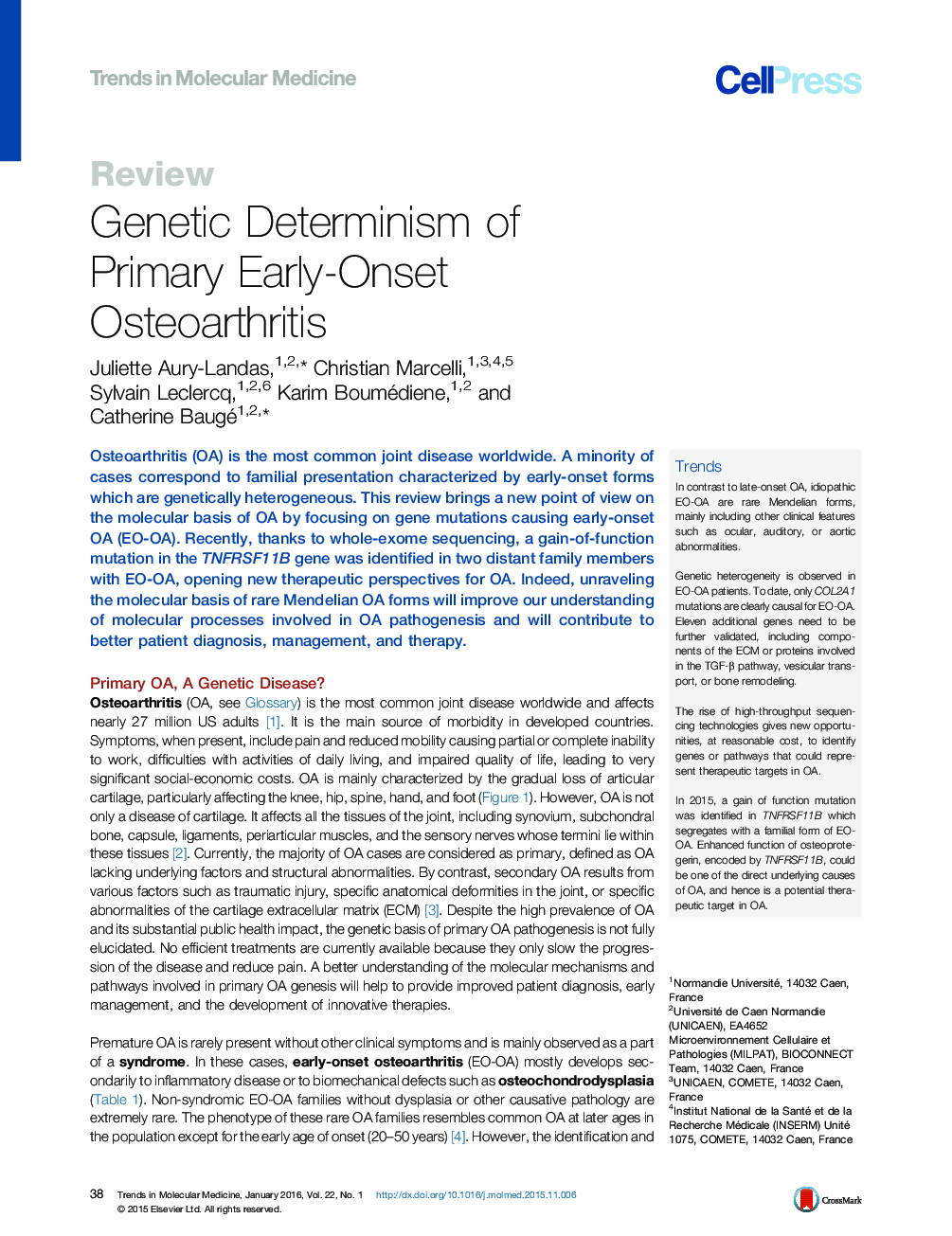| Article ID | Journal | Published Year | Pages | File Type |
|---|---|---|---|---|
| 2838435 | Trends in Molecular Medicine | 2016 | 15 Pages |
Osteoarthritis (OA) is the most common joint disease worldwide. A minority of cases correspond to familial presentation characterized by early-onset forms which are genetically heterogeneous. This review brings a new point of view on the molecular basis of OA by focusing on gene mutations causing early-onset OA (EO-OA). Recently, thanks to whole-exome sequencing, a gain-of-function mutation in the TNFRSF11B gene was identified in two distant family members with EO-OA, opening new therapeutic perspectives for OA. Indeed, unraveling the molecular basis of rare Mendelian OA forms will improve our understanding of molecular processes involved in OA pathogenesis and will contribute to better patient diagnosis, management, and therapy.
TrendsIn contrast to late-onset OA, idiopathic EO-OA are rare Mendelian forms, mainly including other clinical features such as ocular, auditory, or aortic abnormalities.Genetic heterogeneity is observed in EO-OA patients. To date, only COL2A1 mutations are clearly causal for EO-OA. Eleven additional genes need to be further validated, including components of the ECM or proteins involved in the TGF-β pathway, vesicular transport, or bone remodeling.The rise of high-throughput sequencing technologies gives new opportunities, at reasonable cost, to identify genes or pathways that could represent therapeutic targets in OA.In 2015, a gain of function mutation was identified in TNFRSF11B which segregates with a familial form of EO-OA. Enhanced function of osteoprotegerin, encoded by TNFRSF11B, could be one of the direct underlying causes of OA, and hence is a potential therapeutic target in OA.
